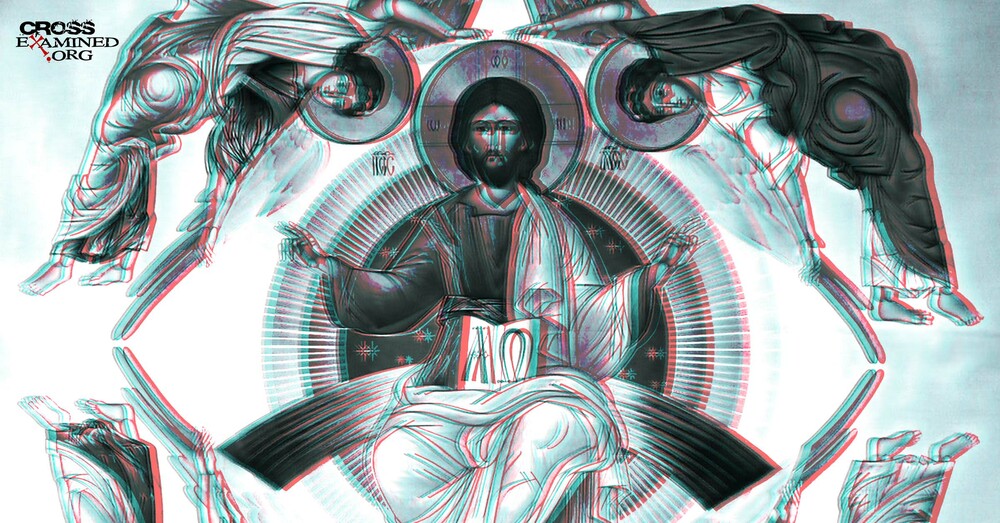Archaeology and Jesus’ Tomb
Every Easter, we Christians gather to remember and celebrate the death and resurrection of Jesus. During the Easter Season, however, there are times when we tend to hear more skeptical portrayals of the resurrection story. For example, In How Jesus became God, Bart Ehrman argues that the empty tomb was just a created story by the first Christians to support their belief that Jesus had been physically raised. Is this probable?
In this post, I share how six different pieces of information about the tomb of Jesus in the Gospel of John match up with archaeological investigations of tombs around Jerusalem. Because of this, it’s unlikely that John is completely making up what he says about the tomb of Jesus.
- Jesus’ tomb is located outside the city of Jerusalem
In the Gospel of John, the tomb is located outside Jerusalem. First, John says that the site of Jesus’ crucifixion was outside the city (John 19:20). Next, he also says the tomb that Jesus was buried in was in the same place as where he was crucified (John 19:41), so it would also be outside Jerusalem. Archaeological investigations of tombs around Jerusalem have shown that tombs are always located outside the city.[1]So, this piece of information in John matches with archaeology. - Jesus’ tomb is located near a road
Jesus was probably crucified near a road. It was common Roman custom to crucify people near public roads[2]and Matthew and Mark note that people were walking by while Jesus was hanging on the cross (Matthew 27:39, Mark 15:29). Since John locates Jesus’ tomb in the same place as where he crucified, the tomb would also be near a road. Archaeology shows that tombs could be near roads around Jerusalem,[3]so again John’s information is probable. - Jesus’ tomb is in a garden
John says Jesus’ tomb was in a garden (19:41). Some people say the idea that Jesus was buried in a garden is just something John made up to suggest that Jesus was buried like a king. But archaeology shows that in first century Jerusalem, tombs and areas of agriculture could easily exist in the same place .[4] So, we shouldn’t immediately conclude that John is fabricating this detail. - Jesus’ tomb is closed with a sealing stone
Like all the other Biblical gospels, John has the tomb of Jesus being sealed with a stone. There is so much archaeological evidence for this practice that I don’t really need to harp on it.[5] Suffice to say that John, and the other gospels, are accurate here. - Jesus’ tomb having a low entrance
After Jesus was resurrected, John describes those who want to get in or look inside having to stoop (John 20:5, 11). This detail matches perfectly with what we know about entrances to first century tombs outside of Jerusalem. They were very low, and you would have to stoop to get in.[6] - Jesus’ body was placed on a burial bench
According to John 20:12, when Mary Magdalene looked inside the tomb, she saw two angles sitting “one at the head and one at the feet, where Jesus’ body had been lying.” This detail matches with first century tombs around Jerusalem having benches along their walls and these being used for placement of the dead body.[7]
Personal Memories of Jesus’ Tomb
These six details correspond to what archaeology tells us about first century tombs around Jerusalem. Despite what Ehrman suggests, it’s unlikely that John made up what he wrote about the empty tomb. Rather, because this gospel claims to have been authored by an eyewitness (John 21:24), it’s more likely that this is his personal memory of Jesus’s tomb being found empty that Easter morning. Archaeology seems to match up well with what we read about Jesus’ tomb in the Gospel of John.
References:
[1] Amos Kloner, and Boaz Zissu. The Necropolis of Jerusalem in the Second Temple Period. Translated by Debby Limmer and Sherry Whetstone. Interdisciplinary Studies in Ancient Culture and Religion, 8. Leuven: Peeters, 2007, pg.29.
[2] Psuedo-Quintillian, Lesser Declamations, 1:259
[3] Kloner, Amos, and Boaz Zissu. The Necropolis of Jerusalem in the Second Temple Period. Pgs.23-24.
[4] Ibid., 34.
[5] Ibid., 53-58.
[6] Ibid., 52.
[7] Amos Kloner, “Did a Rolling Stone Close Jesus’ Tomb?” Biblical Archaeology Review 25, no. 5 (1999), pg.29.
Recommended Resources:
Why We Know the New Testament Writers Told the Truth by Frank Turek (mp4 Download)
The Top Ten Reasons We Know the NT Writers Told the Truth mp3 by Frank Turek
Early Evidence for the Resurrection by Dr. Gary Habermas (DVD), (Mp3) and (Mp4)
Cold Case Resurrection Set by J. Warner Wallace (books)
When writing this blogpost, Matt Spinelli was an intern at the Hendricks Center at Dallas Theological Seminary.
Originally posted at: https://bit.ly/44gblUe










